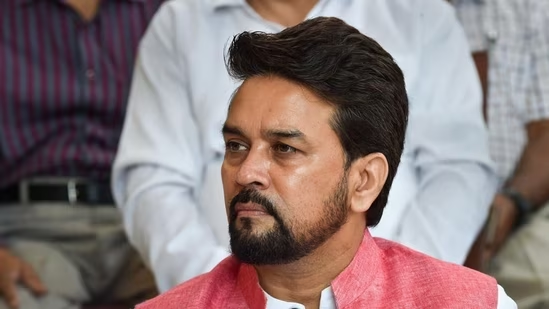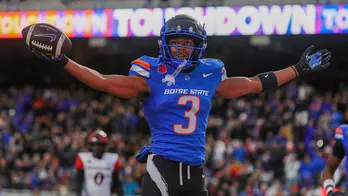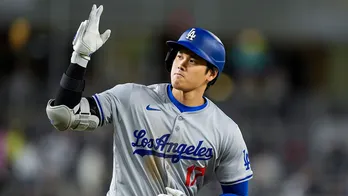It’s the federation that needs to deliver: Union Sports Minister Anurag Thakur
Earlier this month, the International Olympic Committee (IOC) issued a final warning to the Indian Olympic Association (IOA)—resolve all issues or face suspension. Given what happened with the All India Football Federation (AIFF), which was briefly suspended by Fifa, football's governing body, everyone knows the threat isn't hollow.  PREMIUM
PREMIUM
Union Sports Minister Anurag Thakur though is hoping that things don't go south from this point on.
“In Lausanne, the government representative and IOA representative are both meeting IOC and the attempt is to ensure the constitution is in line with the IOC charter and the National Sports Code,” Thakur told HT. “The way I see it, it shouldn’t be much of a hindrance. I am very hopeful the matter will be resolved and we will be able to have the election before December end.”
If things fall in place, India’s sports stars can continue to concentrate on the things they have to. If it doesn’t, sport could again end up in court. So often in recent times, we have seen courts trying to resolve problems related to Indian sport—from selection to administrative issues. Sometimes the cases stay there for really long periods, and isn't a healthy trend. It is something Thakur is very aware of.
“I think it should be time bound because it impacts the careers of players and also the medal tally for the country,” he said. “It is very important that we have less litigation; if you take the number of cases and litigants, you will find out how many are litigants. If anyone needs help, they need to go to the court. The only issue is how much time they are taking and who is taking them to court.”
Top-down vs bottom-up
The top-down approach has worked for Indian sport in the short term. We have produced an Olympic champion and performances across the board are getting better. The Target Olympic Podium Scheme (TOPS) has allowed the elite athletes to dream big, and get the best resources if they so feel the need.
At the same time, many have argued that if India truly wants to become a sporting nation, a lot more needs to be done at the grassroots level.
“Top to bottom is actually helping but simultaneously, we can’t be ignoring the bottom-up approach,” said Thakur. “And we aren’t. For example, Khelo India centres. We are opening 1,000 centres and 590 have already been approved. A former athlete will be hired and given ₹5 lakh to set up a centre and another ₹5 lakh annually to run it. That is one.
“Secondly, Khelo India-accredited academies. That is at the lower level where the upcoming athletes will be taken care of. Third, the leagues we have started for hockey, archery and other sports. Close to 29,000 players are participating. Fourth, we have the ACTC (Annual Calendar for Training and Competitions) for which we sanction close to ₹80-100 crore. Khelo India Youth Games and University Games add to the mix. This is the bottom-up approach. We sanction funds to the associations to organise tournaments from the grassroots to the national level.”
It is both building resources and hiring the right kind of individuals to guide athletes early in their careers. If the basics are sorted, the athlete can build on them. That makes good coaches vital but many have argued that they just don't get paid well enough, certainly not what the foreign coaches get.
“It is not that they are not paid well because they are Indian,” said Thakur. “It is up to the federation—they identify, shortlist and the government helps support and pay the coach. It is the federation that needs to deliver.”
Revenue model
Indian sport is virtually powered by the central government at the moment. They run the Sports Authority of India (SAI) centres, fund the TOPS athletes and give grants to associations. But for the country to truly move forward, the federations need to devise a model that does not merely rely on the government. Simply put, they need to start making money.
“A few of them are starting to do that,” he said. “Hockey generates funds, kabaddi does better and even wrestling generates some money, but not many adopt a professional approach that is needed to do well. I hope that with more champions starting to emerge from different sports, it will help them grow. It also depends on the athletes—for example, in badminton, we have a champion and on personal grounds, he/she may get a lot of sponsorship, but the game and federation doesn’t really benefit.
“Companies also focus on the athlete where they will get something in return. I believe the national government, the state government, the sports association, corporate NGOs and institutes should join hands to create champions from the grassroots to the top. In such a vast country, the government of India alone can’t do everything. The NSFs need to scout and pick the players. If there is transparency, it will help. They need to play a larger role."
Realistic goals
In the past, unrealistic targets have been set for Indian athletes. From a top-10 finish in 2028 to winning 50 medals in 2024, the list is long. These expectations only hurt Indian sport. Thakur wants to keep things real.
“To win as many medals as we can… more than what we did at Tokyo (7)… double digits; and that does not mean 99 medals,” said Thakur. “In many games we have existing champions but where will they be in the next 1-2 years? That is also a challenge. Will they peak at the right time? NSFs need to identify what the priority is— do you want to win at the Olympics, the World Championships or the National Games and accordingly, the roadmap needs to be made.”
Experience unrestricted digital access with HT Premium
Explore amazing offers on HT + Economist Start 14 Days Free Trial Already Subscribed? Sign In
Disclaimer: The copyright of this article belongs to the original author. Reposting this article is solely for the purpose of information dissemination and does not constitute any investment advice. If there is any infringement, please contact us immediately. We will make corrections or deletions as necessary. Thank you.







